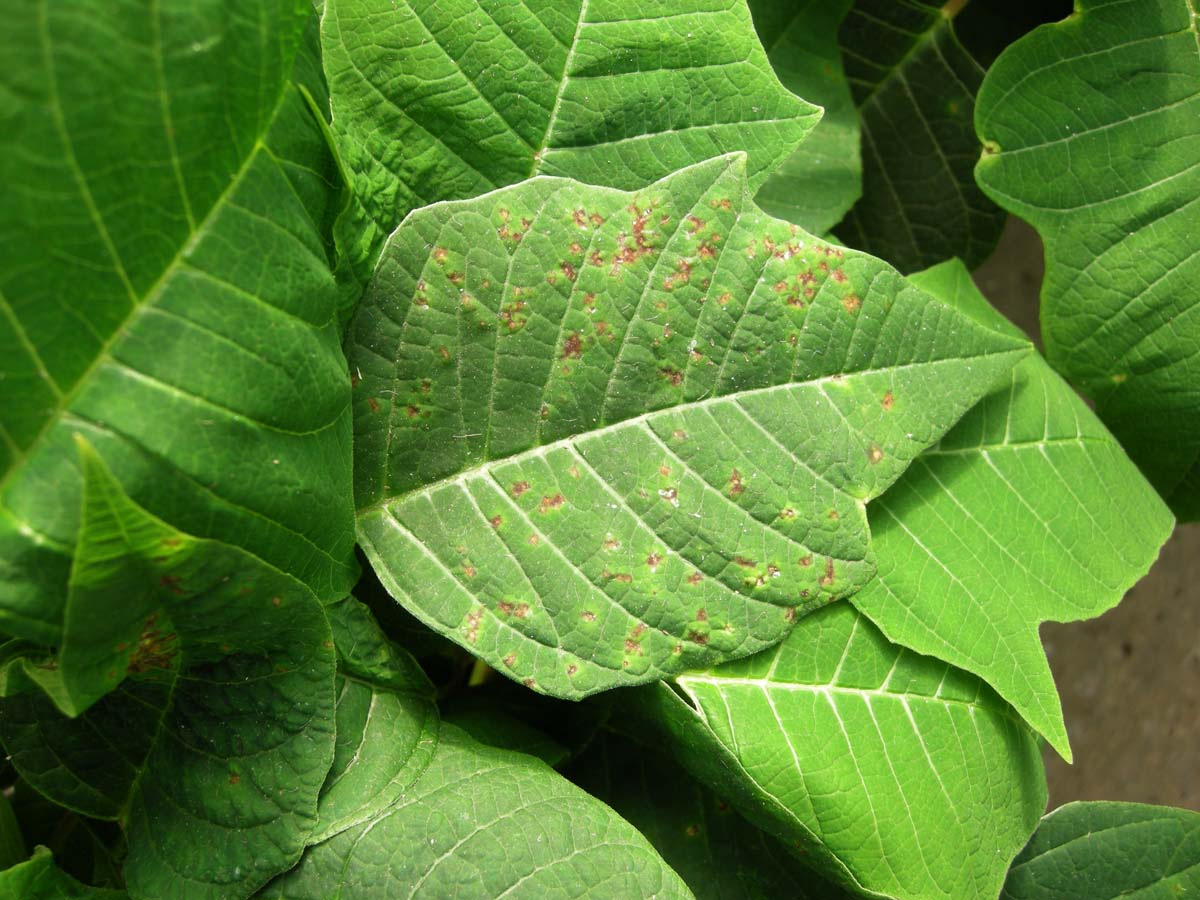
Disease Discussions: Pulling the Fungicide Rug Out From Under You
ARC: Seems like most people want to use a fungicide as a rescue treatment. We both know this is never as good as preventative treatments. But how many times are you asked for a treatment to save a plant from a disease that cannot be controlled with any fungicide? What diseases do you think cannot be controlled? I think Fusarium is a great example of one.
MLD: Yes, the words “disease control” are overstating what even the most skilled greenhouse growers can do most of the time. And yes, Fusarium is right up there in the highest echelon of the “uncontrollables.” I was just visiting Neil Mattson on the Cornell main campus, and he was beset with Fusarium wilt in his basil experiment. That Fusarium is seed-borne, and thoroughly systemic and there are no fungicides that squelch it completely.
ARC: I have seen fungicides actually make Fusarium worse when used at too high a rate and too often. What is the definition of “control” anyway? I think the only true control is never seeing the disease occur and then you and I would not have much
to do.
MLD: Control implies “mastery,” and I don’t think we’ve “mastered” any of the diseases yet! I am much more comfortable with “integrated pest management,” which comes a lot closer to explaining what growers who are on top of disease problems do. It’s more about anticipation than response! Thinking of the most uncontrollables, aren’t there some bacterial diseases that fit into that category?
ARC: Well, there are a lot of manufacturers who sell products to control bacterial diseases. I’ve worked on them quite a bit over the 35 years I have been doing research. It seems like chance has more to do with actual control of a bacterial disease (once it has had an opportunity to start) than what the grower might do. Even the best products used preventatively are wildly erratic when used on bacterial diseases.
MLD: I think “chance” in your comment could be translated as “environmental conditions.” If a grower can tighten up on environmental control so the surface of the plant doesn’t sit wet, and humidity isn’t high, he can shift things so bacteria that cause foliar disease aren’t having a population explosion. One of the other big groups of diseases with no real chemical control is viruses and environmental improvements won’t stop them!
ARC: That’s certainly true. Maybe that’s an advantage: We don’t fool ourselves into thinking there’s a chemical or a temperature setting to make a virus go away. We scout for them and throw them out. Insecticides can be relevant, if your virus problem is Impatiens Necrotic Spot Virus or Tomato Spotted Wilt Virus, both spread by thrips. But insecticides have to be used before the plants get virus-infected. Prevention is key for fungal, bacterial and viral diseases. Having performed more than 1,000 trials on controlling diseases with a broad range of products has led me to the conclusion that any “curative” approach will fall short of actually curing the disease, kind of like taking a statin drug after a lifetime of too much food and too little exercise. That won’t cure you of heart disease, either.
MLD: Speaking of biologicals, how do you see them fitting into the ideal IPM scheme? They are becoming a more typical part of IPM programs throughout the country. Maybe they will finally teach us that prevention is the best control.
ARC: Maybe! For now, chemical control is an important part of our disease prevention activities, but someday we may have improved our clean stock programs, sanitation, environmental control, cultural control and biocontrol to the point that we can use chemicals much less often.


 Video Library
Video Library 




















